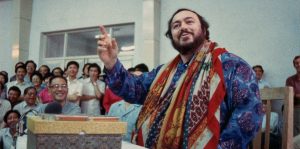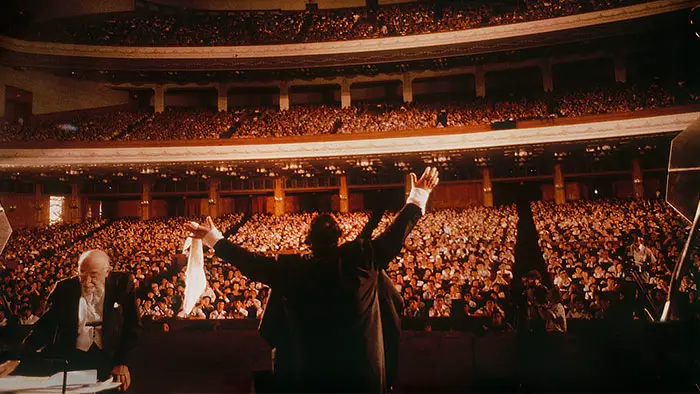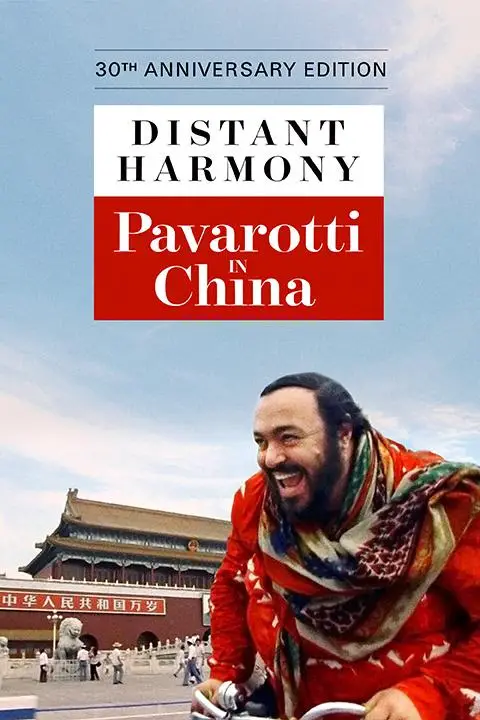
Parts of Distant Harmony, to be sure, haven’t aged well, particularly the uneven way it treats its subjects. On the one hand, Sage takes a keen interest in Pavarotti, portraying him as genial, talented, and eager to learn more about China. By contrast, the Chinese people we see are not so much individuals as exoticized symbols, a homogeneous mass of tai chi practitioners, adorable little kids, and enthusiastic spectators who invariably speak in broken English.

“Although it nowadays seems like a historical footnote at best, Sage convincingly shows us why Pavarotti’s trip mattered.”
At other times, moreover, Distant Harmony plays like the travelogue of an over-eager tourist who’s uninterested in interrogating the things he sees. For instance, the film tries to illustrate the differences between China and the West by contrasting Pavarotti’s Western opera with traditional Beijing opera. In doing so, however, it overlooks that traditional Beijing opera had only recently come back into vogue, having been banned during the Cultural Revolution in favor of so-called “model operas.”
Still, despite its deficiencies, Distant Harmony ends up being a surprisingly poignant experience. To watch it is to open a time capsule and return to a seemingly happier era when Pavarotti was in his prime, the “first” Cold War was winding down, and people everywhere looked forward to China’s reemergence on the world stage. Nobody on screen knows what’ll happen just three years later in Tiananmen Square – and if you watch the film with that knowledge in mind, you might just find yourself on the verge of tears.

"…Distant Harmony ends up being a surprisingly poignant experience."

